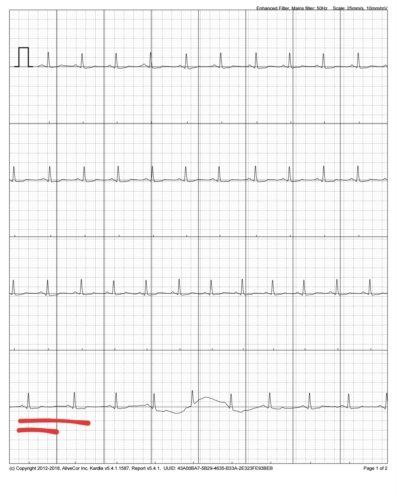

Ventricular tachycardia (VT) is a series of heartbeats starting in the lower chambers of the heart, rather than the upper chambers like normal, that cause an abnormally fast rhythm. Research suggests they may be inherited genetically or linked toĬongenital heart abnormalities or heart muscle disorders like Both are much less common than other types of SVT. These conditions make it difficult for the heart to pump blood effectively and increases the risk of problems like blood clots. Atrial fibrillation is another type of abnormally fast, quivering heart rhythm that is similar to atrial flutter, but the abnormally fast beats are less regular. Atrial flutter & atrial fibrillation happens when electrical signals from the upper chamber of the heart are faster than those in the lower chamber, causing the heart to flutter rather than fully squeezing for a regular beat.That extra pathway may allow impulses to move in a different direction and faster than usual. Wolff-Parkinson-White syndrome affects children born with an extra electrical pathway in the heart.There are different types and causes of SVT, including: Episodes of SVT usually go away by a child's first birthday, although it can return. About half of children with SVT, sometimes called atrial tachycardia, are diagnosed as infants. It happens when electrical signals in the upper chambers of the heart misfire and cause a sudden burst of abnormally fast, “racing" heartbeats that last for seconds, minutes or longer. Supraventricular tachycardia (SVT) is the most common abnormal pediatric heart rhythm, affecting as many as 1 in 250 children. These include: Abnormally fast heartbeats There are other types of irregular heartbeats that may need be treated or monitored. Irregular heart rhythms that may need evaluation & treatment Count beats for 15 seconds, and then multiply by 4. To check your child's pulse or heart rate, gently feel for a slight beat inside the wrist, the crook of the elbow, or side of neck. An athletic teenager may have a heart rate of 50 at rest but could have heart rate of 180 during heavy exercise. For example, a heart rate of 130 to 150 beats per minute is normal for a newborn infant, but it would be considered fast for a school age child. Generally, though, a child's heart rates slows as they get older. Variations in a child's heart rate is normal. Normal Heart Rate Range for Children & Teens Patients feel like their heart “skipped" a beat due to a pause in the rhythm followed by a more forceful beat. These irregular beats may start in either the top chambers (premature atrial contractions) or the bottom chambers (premature ventricular contractions) of the heart. Premature or “skipped" heart beats - seen in up to 75% of pediatric patients. The name “arrhythmia" is actually misleading, since this variation in heartbeats occurs in all healthy children in varying degrees. The heart beats faster when they inhale, and slower when they exhale. It's caused by the normal change in how fast blood returns to the heart when they breath in or out. Respiratory sinus arrhythmia - the most common irregular heart rate in children. Examples of these common but usually harmless arrhythmias include: Most often, these irregularities turn out to be perfectly normal. Irregular heartbeats, also called arrhythmias, are a common reason for referral to a pediatric cardiologist. In addition, some children are born withĬongenital conditions that affect the heart's muscles or electrical pathways and the way it pumps. Irregular heartbeats that are usually normal So can certain medications or consumingĮnergy drinks and other caffeine-containing beverages. Fever, dehydration, and medical conditions likeĪnemia can also play a role.


Physical activity, stress or excitement, for example. There are many factors that can influence this rhythm. Ordinarily, special “pacemaker" cells in the heart send electrical impulses from upper to lower chambers (atria and ventricles), which take turns squeezing and relaxing to pump blood throughout the body. It's normal for a child's heartbeat to speed up or slows down as they play, sleep and grow.īut what if your child's heartbeat seems faster or slower than it should be, or has an unusual pattern? In this article, the American Academy of Pediatrics describes normal heart rate fluctuations in kids, and what might be cause for concern. The heart is one of the most active muscles in the body, beating some 50 million times in a child's first year of life. By: Orhan Kilinc, MD, FAAP, and Christopher S.


 0 kommentar(er)
0 kommentar(er)
